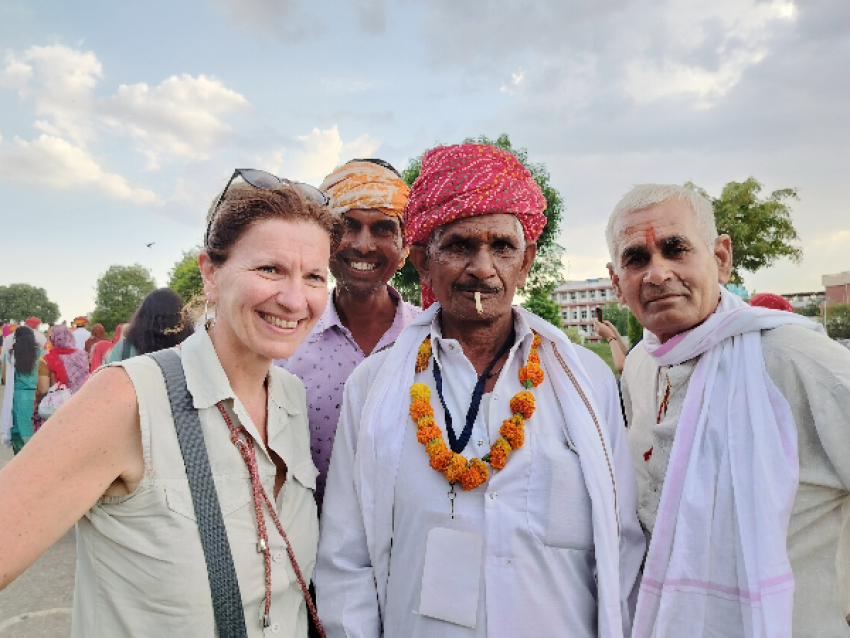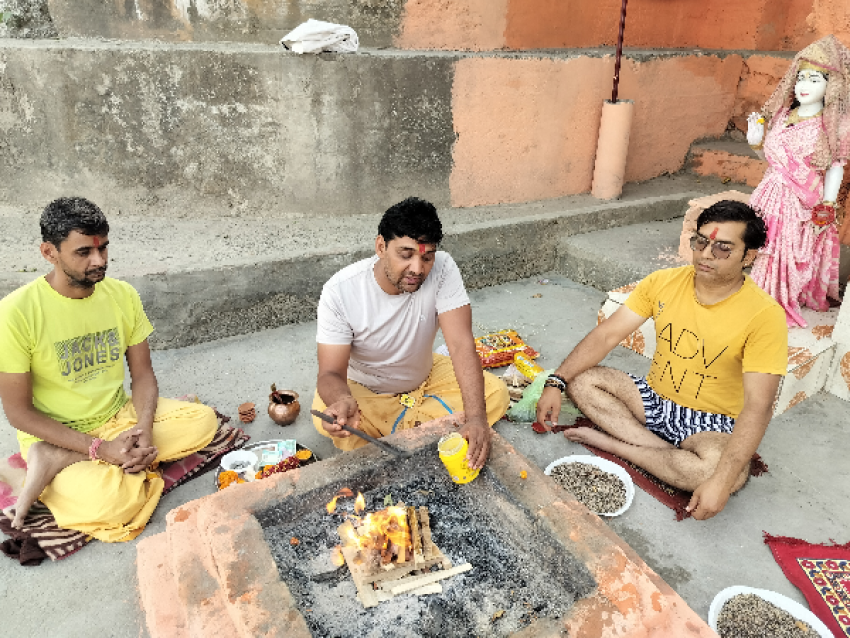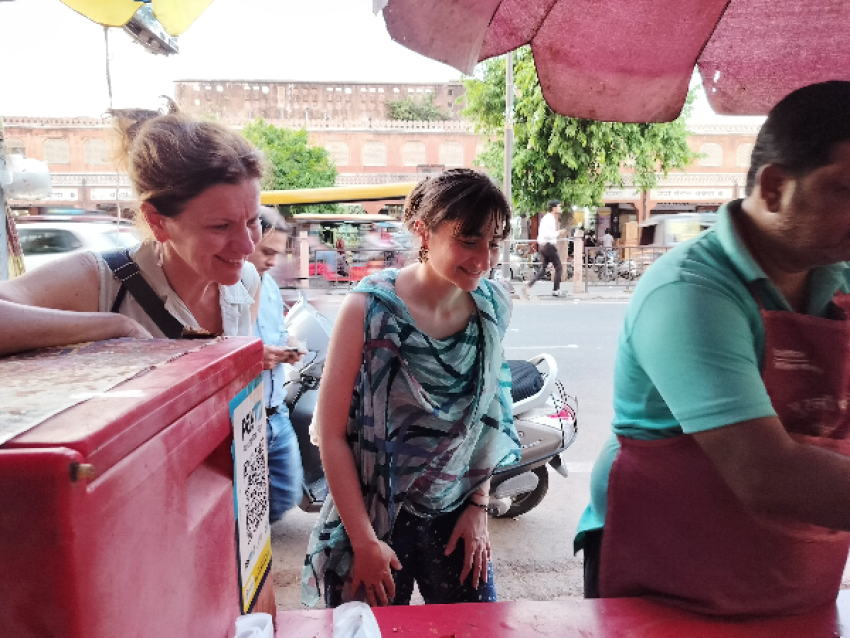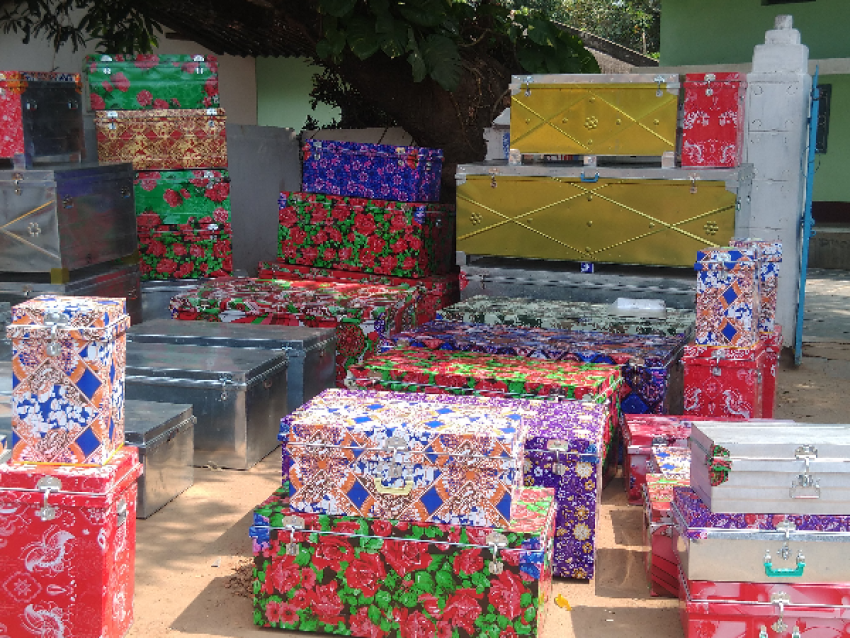Rajasthan and the Pushkar Fair
My name is Vikram, I've been working in tourism for over 12 years. I was a former French-speaking guide for local agencies in India, I have traveled all over India, including the most remote regions with French, Canadian, Belgian and Swiss tour groups. I have an in-depth knowledge of Indian history and geography, which I'm passionate about, and I'm fluent in English and French. Today, I prepare tours in India and supervise the smooth running of the tours offered by our travel agency.
Highlights of the trip
During your stay you can enjoy the following highlights: Culture / Heritage, Discovery, Luxury Travel, Local stay, Great classics.
Best months to go
The best time(s) to go is/are : Janvier, Février, Mars, Avril, Mai, Juin, Juillet, Août, Septembre, Octobre, Novembre, Décembre.
You can go all year round.
How to get there?
You can get there by Plane.
VOYAGE IN INDIA
From 1199€ à 1200€ / person
Travel suitable for :
Detail of the stay : Rajasthan and the Pushkar Fair - 15 days
Delhi

© Vikram
Steps: Delhi
Arrival in the morning or evening at Delhi IGI airport, terminal 3. Welcome to India by our local representative and transfer to hotel.
Delhi, capital of India, an ancient, medieval and modern city. Morning departure to discover old Delhi: visit India's largest mosque, the Jama Masjid, and the bustling Chandni Chowk markets. In the late morning, visit the Sikh Bangla Sahib temple, built in white marble, topped by a golden dome and featuring a vast basin for the ablutions of the faithful. It was built in the 18th century in memory of the visit of the eighth Guru Harkrishan, in 1664. Last but not least, don't miss the refectory (langar) typical of all Sikh temples. At mealtimes, devotees sit on the floor in rows, and volunteers serve them dal and chapati. This communal meal symbolizes the unity of the community and the theoretical absence of the notion of caste. In the afternoon, visit the Lodhi Gardens Mughal garden and the Dilli Haat artists' village. In the evening, visit India Gate and the presential house from the outside, illuminated during the Festival of Lights.
Mandawa

© vikram
Departure for the Shekhawati region, famous for its havelis. Havelis are mansions decorated with frescoes and various motifs, once owned by wealthy merchants trading on the silk route between the Indus Valley and Central Asia. Settle in the village of Mandawa, the former haveli of a local merchant family, a truly charming building. First visit to Mandawa's havelis and market. Free evening at your hotel.
Bikaner

© vikram
Departure for Bikaner. Settle in Bikaner, the city founded by King Rao Bika in the 15th century on the edge of the Thar Desert. In the afternoon, visit to Bikaner's Junagarh Fort, an impressive fort which used to be called Chintamani and was renamed Junagarh in the 20th century, meaning the old fort. It's one of the few forts in the region not to be built on a hill, but on the plain. So you can reach it on foot, not by elephant. The fort was built by the prime minister of Raja Rai Singhji, the governor of Bikaner, who ruled between 1571 and 1611. In the late afternoon, visit Bikaner town, its havelis and market.
Jaisalmer

© Vikram
Departure for Jaisalmer. On the way, visit to the Ramdeora temple, dedicated to the holy Baba Ramdeo, revered by the people of the desert. Settle in Jaisalmer. At the end of the day, visit the Bada Bagh (royal cenotaphs) at sunset. Bada Bagh, 6 km from Jaisalmer, groups together the cenotaphs of the maharajas of Jaisalmer. Under each dome, supported by pillars, is a marble stele. On the crest of the Bada Bagh hill, the cenotaphs have no domes but pointed roofs. These are the oldest. Below, an oasis recalls the days of Jaisalmer's vegetable garden (bada bagh means "big garden").
Jaisalmer

© Vikram
Steps: Jaisalmer
Visit the Golden Fort (Sonar Kila), also known as the Carcassonne of India, built in 1156 by the Rajput-Jaisal ruler, Patwa-ki-Haveli, Salim Singh-ki-Haveli, Nathmal-ki-Haveli and the Jain temple of the citadel. In the afternoon, visit Lake Gadisar, an ancient reservoir that provided the city's water supply until the 1950s. Departure for a camel or Jeep ride in the Thar desert (Khuri village, 40 km from the city). Evening entertainment by Rajasthani gypsies with traditional music and dance, followed by dinner. Return to Jaisalmer.
Osiyan / Jodhpur
Departure for Jodhpur. On the way, visit to the Sachiya Mata temple and the Jain temple in the village of Osiyan. In the afternoon, visit the Mehrangarh fortress, nicknamed the "magnificent fort", towering 122 metres above the city. Inside is a richly decorated palace. Visit the Jaswant Thada memorial to Maharaja Jaswant Singh II, built in 1899. This monument is built entirely of finely sculpted and polished white marble. Then visit the Mandore garden and the cenotaphs of the kings of Jodhpur. In the late afternoon, discover the "blue city" and its spice merchants.
Ranakpur / Kumbhalgarh / Udaipur
Departure for Udaipur. On the way, visit the Chaumukha Mandir Jain temple in Ranakpur, one of the five major Jain pilgrimages. Dating back to the 15th century, the structure comprises 29 white marble halls, every inch of which is meticulously carved and ornamented. The temple is also known as the "Temple of Four Faces", as it houses a four-faced Tîrthankara (sculpture of Jain masters who have been deified) looking towards the four cardinal points. The building is said to have a total of 1,444 pillars, all carved with different ornamentation. On the way, visit the Kumbhalgarh fort. Settle in Udaipur. In the evening, traditional Rajasthani dance and puppet show at Bagore - ki- Haveli.
Udaipur
Departure for the City Palace (complex of several palaces built in 1559 by MaharanaUdai Singh as the main palace of the Sisodia Rajput dynasty), and the Hindu temple Temple Jagdish. Visit to the Sheliyonki Bari garden, one of Udaipur's most beautiful gardens. SaheliyonKi Bari means "girls' garden". The garden, famous for its green lawns and fountains, is located on the banks of Fateh Sagar Lake and was built in the 18th century by Maharaja Sangram for his queen. Spend the day visiting the city and its craftsmen's market. In the evening, boat trip on Lake Pichola.
Udaipur / Pushkar
Departure for Pushkar, a small town nestling around a sacred lake, where Brahma, the Hindu creator-god, is said to have dropped a lotus flower. In the 1970s, it was an important stopping-off point for hippies from all over the world. Today, Pushkar is a major pilgrimage site for Hindus, with 400 temples and 52 ghats around the sacred lake. Installation in Pushkar. Visit to the sacred lake and its many temples, including one dedicated to Brahma. In the late afternoon, visit the cattle market at the Pushkar fair.
Pushkar
A day devoted to visiting the events taking place during the Pushkar fair. See the camel race, visit the markets, traditional dances, camel decoration competitions etc... A day full of color and discovery. In the afternoon, climb to the top of the Savitri temple hill to see the pilgrims and Sâdhu. On arrival at the top, a panoramic view of Pushkar and the fairgrounds. In the late afternoon, watch the ablution at the sacred lake of pilgrims from 4 corners of Rajasthan.
Pushkar / Jaipur
Departure for Jaipur. On the way visit the Jain temple of Nasiyan and Akbar's palace and museum in Ajmer. Check-in at hotel. Jaipur, capital of Rajasthan, founded by the astronomer king Jai Singh II between 1688 and 1743. Visit of the Palace of the Winds (Hawa Mahal) from the outside, visit of the City Palace (the palace of the kings of Jaipur). In the evening, explore the old city, also known as the "Pink City", and visit the temple of Shri Govind Deo Ji.
Jaipur
Departure for Amber Fort. Ride up to Amber Fort by Jeep, then visit this fortified palace which was the citadel of the Kachhwaha dynasty until 1727, when the capital was transferred to Jaipur. Successive rulers continued to visit for special occasions, seeking the blessing of the family goddess, Shila Devi. The citadel was founded under the orders of Man Singh I in 1592, on the ruins of an old 11th-century fort, but it is the various buildings added by Jai Singh I that form the magnificent central body. Early afternoon visit to the City Palace (the palace of the King of Jaipur) and Jaipur's Jantar Mantar Observatory. Ride in an electric vehicle through the bazaars of the "Pink City" and discover its historic quarters and local markets. Evening cooking class and dinner with an Indian family.
Jaipur / Fatehpur Sikri / Agra
Departure for Agra. On the way, visit to the fortified city of Fatehpur Sikri. It was the imperial capital of the Mughal Empire from 1571 to 1584. Built by Emperor Akbar and perfectly preserved since its abandonment, it is a remarkable testimony to 16th-century Indo-Islamic architecture. In the afternoon, visit Agra Fort, one of the finest Mughal-style forts built in 1565 by Akbar and enlarged by his grandson Shah Jahan. In the evening, visit Agra's bazaars.
Agra / Delhi
Early morning, visit the Taj Mahal, one of the seven wonders of the world. Built at the request of the Mughal Emperor Shah Jahan as a tribute to his beloved, its construction involved more than 20,000 workers and craftsmen from all over the world. Return to the hotel for breakfast. Then visit Agra Fort, one of the finest Mughal-style forts built in 1565 by Akbar and enlarged by his grandson Shah Jahan. Afternoon departure for Delhi. Installation in Delhi. Free evening in Delhi.
Delhi
Transfer to the international airport for your return flight to France.







